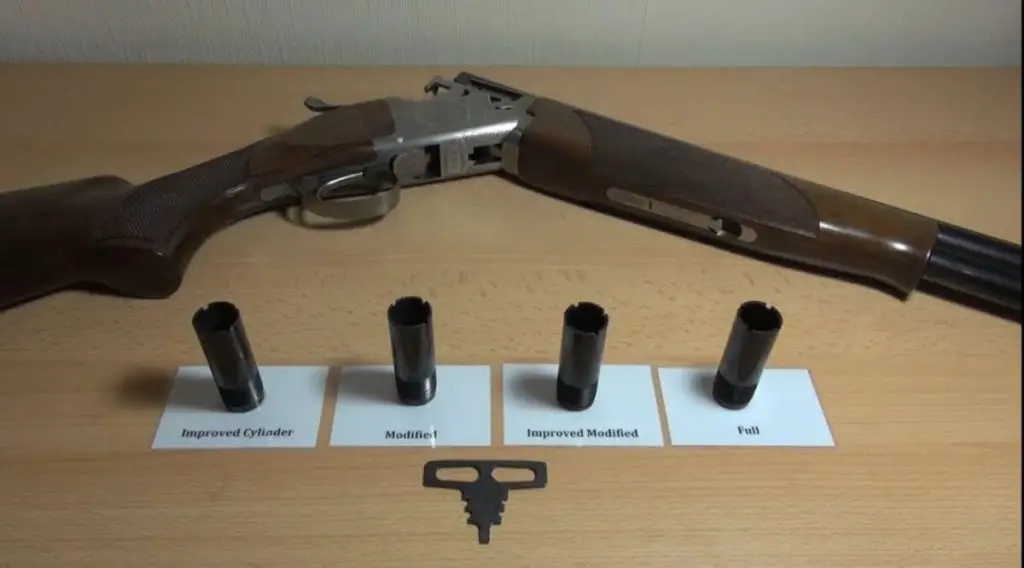In the world of architectural design and building modeling, Revit stands as a powerful tool that brings precision and clarity to construction projects. Among its many features, the concept of scope boxes is often underestimated yet crucial for managing and organizing layouts effectively. Scope boxes serve as invisible boundaries to control graphical display areas across views in a Revit project. By defining these boundaries, designers can focus on specific areas, keeping their workflow smooth and efficient.
But what happens when you need to adjust these boundaries? That’s where editing scope boxes in Revit becomes vital. This guide will walk you through every detail of this process, offering insights and tips that will elevate your Revit proficiency.
Navigating the Basics of Scope Boxes
Understanding the purpose and functionality of scope boxes in Revit sets the foundation for their effective use. They are essentially rectangular spaces that help control the visibility and appearance of elements within views, such as plans, elevations, and sections. These boxes enable designers to manage and coordinate large projects by focusing on specific areas, thus avoiding overwhelming clutter.
The Role of Scope Boxes in Revit
To truly appreciate the value of scope boxes, consider their applications:
– **View Management**: Scope boxes define what portions of the project are visible in each view, allowing designers to focus on specific elements while minimizing distractions.
– **Consistent Alignment**: They ensure elements across different views are consistently positioned, aiding in seamless comparison and coordination.
– **Enhanced Collaboration**: By demarcating areas, team members can work on different parts of a project simultaneously without interference.
Application Across Multiple Views
Scope boxes aren’t limited to single views; instead, they can be applied across various views in your Revit project, maintaining the same visual focus and alignment. This consistency becomes especially useful in large-scale projects where coordination and comparison are critical.
Steps to Edit a Scope Box in Revit
Now that the significance of scope boxes is clear, let’s delve into the steps required to modify them. Editing a scope box involves adjustments to its size, shape, and orientation to better fit the architectural needs.
Step-by-Step Guide to Editing Scope Boxes
Here’s how to navigate the editing process:
-
Select the Scope Box:
Begin by accessing the view containing the scope box you intend to modify. Click on the scope box—you’ll notice it highlighted, signifying its selection. -
Enter Edit Mode:
With the scope box selected, look for the “Modify” tab in the ribbon at the top of the screen. Click on “Edit” to enter the edit mode specifically for scope boxes. -
Adjust Dimensions:
Once in edit mode, you can adjust the dimensions by clicking and dragging the handles around the perimeter of the scope box. Alternatively, you can enter precise measurements in the properties panel. -
Reposition the Box:
If you need to reposition the entire scope box, click within its boundary (but away from the handles) and drag it to the desired location within the view. -
Change Orientation:
You can rotate the scope box if your project requires a new orientation. Simply click on one of the corner handles and drag in a rotational motion to the desired angle. -
Finalizing Adjustments:
Once you’ve made the changes, click “Finish Edit Mode” in the ribbon to save your modifications.
If you find that your scope box adjustments aren’t visible in other views, ensure consistency by selecting the relevant views and applying the same scope box across them.
Common Editing Challenges and Solutions
Editing scope boxes isn’t without its challenges. Here are some common issues and their resolutions:
– **Overlapping Elements**: Adjust the size of your scope box to minimize conflicts with nearby elements, ensuring clear visibility.
– **View Pane Discrepancies**: Scope boxes might not encompass all elements you want visible. Scale the box to include all necessary components.
– **Rotation Limitations**: If the scope box won’t rotate as desired, check for view constraints and ensure your box is free from any restrictions.
Advanced Concepts: Leveraging Scope Boxes for Enhanced Design Efficiency
Beyond basic adjustments, scope boxes can significantly contribute to optimizing your design processes. Understanding these advanced functionalities will allow you to wield them more effectively in complex projects.
Coordinating Multiple Scope Boxes
In some projects, a single scope box isn’t enough; perhaps several overlapping or adjacent boxes are necessary. Here’s how to manage them:
– **Layering Scope Boxes**: Use multiple scope boxes to cover different parts of a single view, maintaining distinct zones for varied focus.
– **Visibility Control**: Assigning different scope boxes to different view templates ensures each template displays the proper focus area.
Utilizing Parameters and Extents
Scope boxes have associated parameters that you can harness:
– **Control Parameters**: Adjust these as needed to change the visibility and behaviors of elements within the scope box’s domain.
– **View-Specific Extents**: This feature allows control over the scope box’s application across selected views, providing tailored presentations.
Enhancing Collaboration with Integrated Scope Boxes
Collaboration is critical in architectural design. Scope boxes, when used correctly, can facilitate smoother teamwork:
– **Assigning Workzones**: Break down projects into smaller zones, each controlled by a scope box, so team members know their boundaries.
– **Stabilized Layouts**: Having consistent layouts across views helps collaborators understand the project better, reducing miscommunication.
Comparison of Scope Boxes with Similar Tools
To gain a clearer understanding of scope boxes, comparing them with similar tools is beneficial:
| **Feature** | **Scope Boxes** | **Section Boxes** |
|—————————-|———————————————|——————————————–|
| **Purpose** | Define view extents for 2D views | Crop 3D views to focus on particular areas |
| **Application** | Used across various view types | Specific to 3D views only |
| **Adjustments** | Resizable in 2D space | Resizable in 3D space |
| **Use Case** | Primarily for plan/elevation view control | Primarily for isolating elements in 3D |
| **Visibility in Multiple Views** | Can be assigned to multiple views | Only applicable within the active 3D view |
Each tool has its place within Revit’s arsenal, and understanding where and when to apply them enhances project efficiency and clarity.
There you have it, a comprehensive guide to editing and optimizing scope boxes in Revit. By mastering these techniques, you’re not just organizing views; you’re establishing a foundation for meticulous and collaborative design. Dive deep into the details, manipulate these boundaries effectively, and watch as your projects unfold with precision and harmony.
Frequently Asked Questions
1. How do I access the scope box editor in Revit?
To access the scope box editor in Revit, go to the Manage tab and select the Scope Box button in the Properties panel. This will bring up the Scope Box dialog box where you can edit existing scope boxes or create new ones.
2. Can I change the name of a scope box in Revit?
Yes, you can change the name of a scope box in Revit by selecting the box in the Scope Box dialog box, and then clicking on the Rename button. This will allow you to enter a new name for the scope box.
3. How do I change the dimensions of a scope box?
To change the dimensions of a scope box in Revit, select the box in the Scope Box dialog box and then click on the Modify button. You can then adjust the dimensions of the scope box by dragging the handles or entering specific values.
4. Is it possible to adjust the position of a scope box in Revit?
Yes, you can adjust the position of a scope box in Revit by selecting the box in the Scope Box dialog box and then using the Move and Rotate tools to reposition it as needed.
5. Can I delete a scope box in Revit?
Yes, you can delete a scope box in Revit by selecting the box in the Scope Box dialog box and then clicking on the Delete button. Make sure to confirm the deletion as this action cannot be undone.
6. How can I change the appearance of a scope box in Revit?
To change the appearance of a scope box in Revit, you can modify its colors and line weight in the Properties panel of the Scope Box dialog box. You can also adjust the transparency of the scope box if needed.
7. Can I copy a scope box in Revit?
Yes, you can copy a scope box in Revit by selecting the box in the Scope Box dialog box and then clicking on the Copy button. You can then paste the copied scope box in the same project or another one.
8. How do I align a scope box with a specific element in Revit?
To align a scope box with a specific element in Revit, you can use the Align tool in the Modify panel of the Scope Box dialog box. This tool allows you to align the scope box with edges or faces of other elements in the project.
9. Is it possible to apply a scope box to multiple views in Revit?
Yes, you can apply a scope box to multiple views in Revit by selecting the desired views in the project browser, right-clicking, and selecting the Apply Scope Box option. This will allow you to choose the scope box to apply to all selected views.
10. Can I schedule scope boxes in Revit?
Unfortunately, you cannot schedule scope boxes directly in Revit. However, you can create a custom schedule by selecting the elements associated with the scope boxes and extracting the necessary information like name, dimensions, and position.
- How to Put a Scope on a Mosin Infantry in Tarkov: A Quick Guide - November 7, 2024
- How to Edit a Scope Box in Revit: A Step-by-Step Guide - November 6, 2024
- How to Put a Scope on Mosin Tarkov: Expert Tips for Gamers - November 6, 2024


